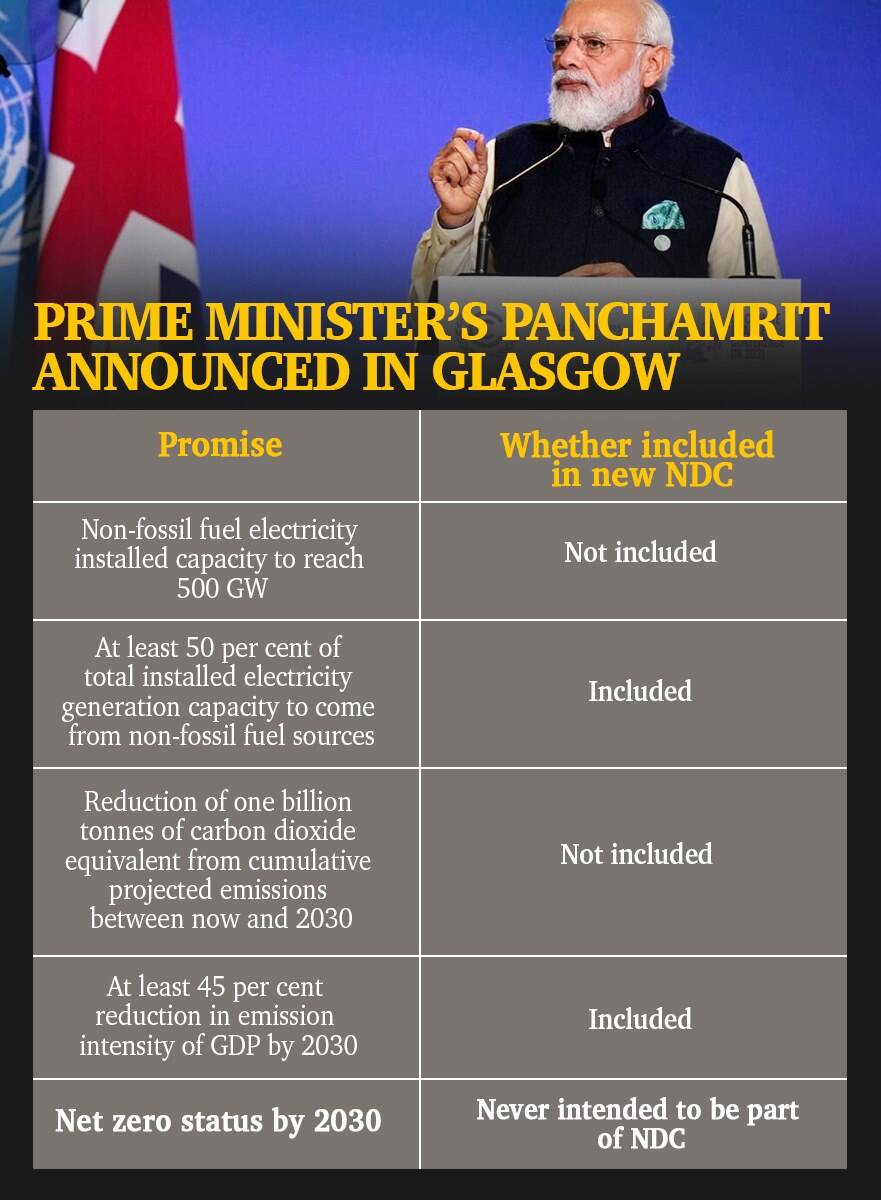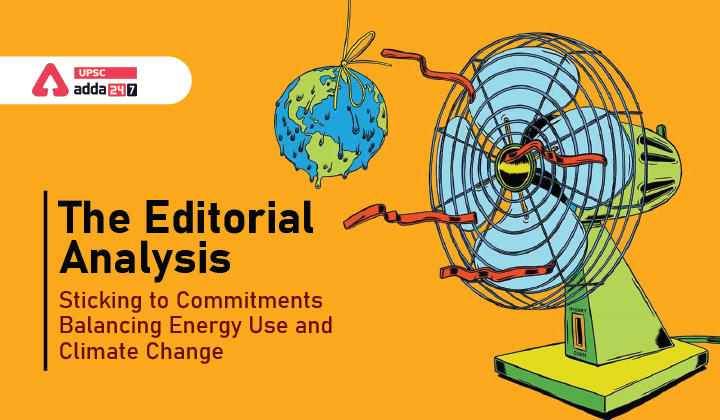Table of Contents
The Editorial Analysis- Sticking to Commitments, Balancing Energy Use and Climate Change- Relevance for UPSC Exam
General Studies II- Government policies and interventions for development in various sectors and issues arising out of their design and implementation.
In News
Ahead of the 27th Conference of the Parties of the UNFCCC (COP 27), in Sharm El-Sheikh, Egypt, in November, the Union Cabinet has approved India’s Nationally Determined Contributions (NDC), a formal statement detailing its action plan to address climate change.
2015 Paris Agreement
Historical Background
- In 1992, Earth Summit was held in Brazilwhere the countries entered into an international treaty known as the United Nations Framework Convention on Climate Change (UNFCCC).
- In 1997,the Kyoto Protocol was adopted and legally bounded the developed countries to reduce the emission targets. However, this agreement didn’t work out as the top two polluter countries in the world, China and the US didn’t participate.
- At the COP17, negotiations for the Paris Agreement started in Durban, South Africa to create a new, comprehensive, and legally binding climate treaty by 2015. The treaty wasto include major Carbon emitters to limit and reduce their emissions of Carbon and gases leading to global warming.
The Paris agreement was open for signatures from April 22, 2016, to April 21, 2017, came into force on November 4, 2016.
The Paris Agreement (also known as Conference of Parties 21 or COP 21) is a multilateral agreement under the United Nations Framework Convention on Climate Change (UNFCCC) to combat climate change and its adverse effects.
- India had signed the agreement in New York in April 2016.
- So far, 191 countries have signed the agreement.
- It officially entered into force after 55 parties to the convention accounting for at least 55% of total GHG (greenhouse gas) emissions ratified it
- India was 62nd country to ratify it
AIM
- To keep the increasein global temperature in this century below 2°C above pre-industrial levels while making efforts to limit the increase to 1.5°C by 2100.
- To help and support the countries that are vulnerable to the adverse impacts of climate change.
- To provide financial and technological support to the developing countriesto adapt to climate change and transition to clean energy.
The 20/20/20 targets of the Paris Agreement-The Paris Agreement aims to reduce Carbon Dioxide emissions by 20% and targets to increase the renewable energy market share and energy efficiency by 20% each.
Adoption of the Agreement
The Agreement was adopted in Paris, France on 12 December 2015, and the agreement was signed on April 22, 2016, to reduce the emission of gasses contributing to global warming. At present, 195 UNFCCC members have signed the Paris Agreement. The agreement replaced the Kyoto Protocol, a similar agreement to combat climate change.
Financial Support Pledge during COP 21
1- During the Paris Agreement, the developed countries committed $100 Billion a year.
2- For the launch of CREWS (Climate Risk and Early Warning Systems) initiative and Climate Risk Insurance, the G7 countries announced USD 420 Million.
(G7 countries-It includes 7 countries, namely, Canada, France, Germany, Italy, Japan, the United Kingdom, and the United States. These countries meet annually to discuss several issues including global economic governance, international security, and energy policy.)
Difference between the Kyoto Protocol and the Paris Agreement
| Paris Agreement | Kyoto Protocol |
| 1- No difference between developed and developing nations. | 1- There was a differentiation between the developed and the developing nations. |
| 2- Countries announce their next round of targets every five years. | 2- No such specific announcement of targets was made. |
India at the COP 21
1- India stated that rapid growth is required to meet the requirements of the 1.25 billion population of the globe. Out of this, 300 million people still do not have access to energy.
2- Despite the increasing demands, India pledged to limit the emissions intensity per unit GDP by 33-35% of 2005 levels.
3- India also aims to reach 40% of the installed capacity via non-fossil fuels.
4- By the year 2022, India targets 175 GW of renewable energy generation.
5- India set a goal to increase forest cover to absorb 2.5 billion tonnes worth of carbon dioxide.
Sticking to Commitments
- India’s first NDC, in 2015, specified eight targets, the most salient of them being reducing the emissions intensity of GDP by 33%-35% (of 2005 levels) by 2030, having 40% of its installed electricity capacity sourced from renewable energy, and creating an additional carbon sink of 2.5-3 billion tonnes of CO2 equivalent through forest and tree cover by 2030.
- At COP 26 in Glasgow in 2021, Prime Minister Narendra Modi laid out five commitments, or ‘Panchamrit’, as the Government references it, which included India increasing its non-fossil energy capacity to 500 GW by 2030 and achieving “Net Zero” by 2070, or no net carbon dioxide emitted from energy sources.
- India is on way to achieve its existing targets well ahead of the 2030 timeline.
- 5 per cent of India’s current installed electricity capacity of 403 GW is now powered by non-fossil fuels. With most of the new capacity additions happening in the renewable energy sector, a 10 per cent rise in the share of non-fossil fuels in electricity generation is not an unrealistic target.

Way Forward
- While India is within its right to specify its emissions pathway, it should not — at any forum — promise more than what it can deliver as this undermines the moral authority that India brings to future negotiations.
- India has expressed its intent, via several legislations, to use energy efficiently and many of its biggest corporations have committed to shifting away from polluting energy sources.
- Going ahead, these should be grounds for India, at its pace, to be an exemplar for balancing energy use, development and meeting climate goals.




 TSPSC Group 1 Question Paper 2024, Downl...
TSPSC Group 1 Question Paper 2024, Downl...
 TSPSC Group 1 Answer key 2024 Out, Downl...
TSPSC Group 1 Answer key 2024 Out, Downl...
 UPSC Prelims 2024 Question Paper, Downlo...
UPSC Prelims 2024 Question Paper, Downlo...
